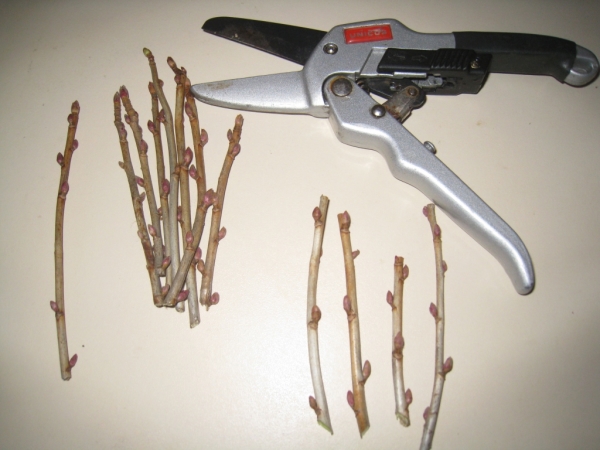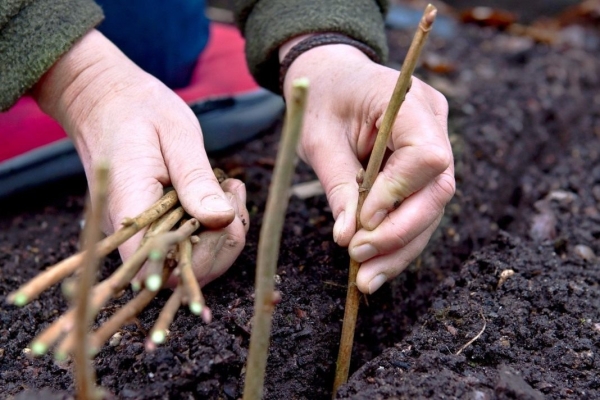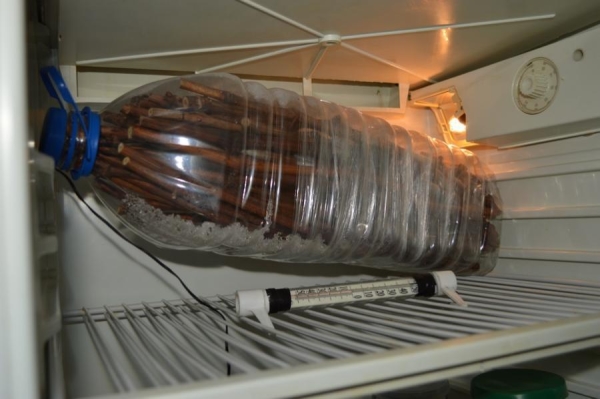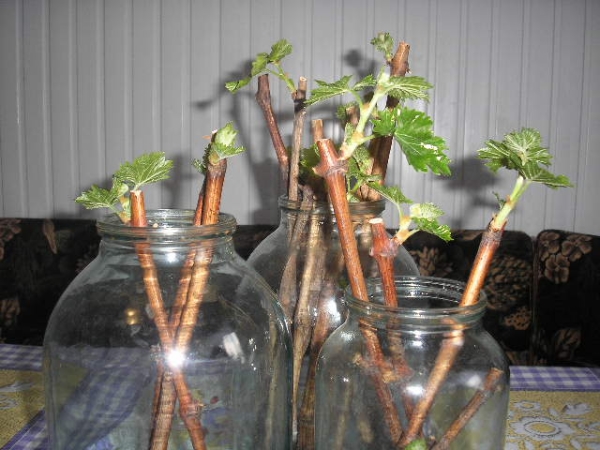Sometimes you can find the statement that black currant - long-liver, and you can harvest from it twenty years or more.
On the one hand, it is like this: in the old berries the bushes and the older ones are found. On the other hand, the biological lifespan and the period of maximum productivity are different things.
The best yields of black currant brings in the 4th to 8th year of life. After that, it requires rejuvenation, and in the 12th year will have to uproot the bush.
Therefore, how to propagate this wonderful culture, you need to think in advance.
Table of contents
Is it possible to propagate black and red currants by cuttings and layering?
Currant (and black and red) - a culture that is very easily amenable to vegetative propagation. There are two main ways:
- layering (survival rate of 100%);
- cuttings (survival rate of 90%).
Looking at these numbers, it can be decided that it is not the best option to dissolve a culture by cutting. In addition, it is more troublesome and time consuming.

And yet, in the cultivation of currants by cuttings and subsequent cultivation there are several advantages:
- Ability to update varietal composition. Cuttings can be taken not only from your own plants, but you can buy or exchange with your neighbors.
- The ability to do without a transplant. The cuttings easily root in a permanent place, and the root system of cuttings when transferred to a new place is injured.
- More planting material. Cuttings can be cut as you like.
At all, 90% survival rate of cuttings is a very good indicator. For comparison: at raspberry it is 60-80%, and the yield of seedlings is even lower.
Reproduction green or lignified - which is better?
Black currant is propagated by both green and lignified cuttings.
Greens are cuttings.sliced from a one-year vegetative shoot. "Lignified" take either from the well-grown shoots of this year (autumn), or from last year’s (spring).
Each type of cuttings that you want to plant has its own advantages and disadvantages:
| Material | Benefits | disadvantages |
| Green cuttings | Do not require worries about the long-term preservation of planting material. Able to bloom and show the first fruits in the next year. |
Moisture evaporates easily through non-mature bark, therefore more effort is required to maintain the level of humidity. |
| Lignified cuttings | Can be harvested during the rest period - at any convenient time. Dense ripened bark and wood retain moisture and nutrition well. Allowed to plant in open ground to reject weak plants. |
Requires preparation of storage space with the correct level of humidity and temperature, with protection from mold and rotting of planting material. |
In this way, black currant can be successfully grassed in any way and at any time of the year.
It all depends on the capabilities and desires of the gardener himself. With proper organization of the process, the output of seedlings is the same.
Proper harvesting cuttings in the summer
To plant black cuttings of black currant, they are harvested in the active growth phase of the plant in summer - from the end of June to the beginning of July.
In clear weather, harvesting should be carried out early in the morning, over the dew. In the cloudy - at any time of the day, according to the following scheme:
- A one-year growth is chosen, the lower part of which has begun to grow wood, while the upper part remains flexible and elastic.
- Secateurs scalded with boiling water, wiped with a clean cloth. The selected shoot is cut from the bush.
- From the central part of the shoot, an area with three good buds is selected. Under the bottom is a straight cut at a distance of half a centimeter.Above the top - at an angle to the kidney.
- From the two lower buds, the leaves are removed completely, together with the petioles. On top of the petiole is left, and the sheet plate is cut by two thirds to reduce the evaporation of moisture.

Prepared in this way cuttings can be planted immediately. If for some reason this is not possible, you need to put the planting material in the water and cover the top with a bag.
Long store summer cuttings can not, you should try to land them as soon as possible.
How to plant and care
Currant cuttings will take root better if the soil is loose and nutritious. therefore landing place must be well fertilized humus and add peat.
If you plan to grow a small number of bushes, you can immediately plant cuttings on a permanent place. In the case when many saplings are required, it is worthwhile to organize a school. So it will be easier to care for cuttings after planting.
General rule: the rooting area must be positioned so that it can be easily applied.
The procedure for planting cuttings:
- In the prepared moist soil, embed the cuttings on the 2 lower buds at an angle of 45.
- Make sure that the upper bud with a leaf is directed upwards, otherwise the growth of the new shoot will go to the side.
- Squeeze the soil around the cuttings and pour. To grind the planting layer of peat thickness of 3-5 cm.
- Cover the cuttings of a clipped plastic bottle without a cap to ensure optimum temperature and humidity. For normal rooting during the day, the temperature should be around + 25⁰, and should not fall below + 16⁰ at night.
- Ensure that the landing site is in a stray shadow. Direct sunlight "brew" cuttings.

Some gardeners before planting maintain cuttings in the solution "Heteroauxin". It doesn’t hurt, but the black currant is so easily rooted that it doesn’t really need additional treatment with stimulants.
Before rooting, while the cuttings are “on the autonomous power supply”, constant care for watering, spraying and airing the landings will be required.
If there is some resistance, there are roots. After this, the mini-cleanser is removed, leaving a shading.
The following year, one long shoot can be pulled from the cutting. To get a full bush, you need shorten it, leaving 3-4 kidneys below.
For the speedy formation of the bush experts advise planting black currant cuttings in the wells of 3 pieces. They should be buried also at an angle, but guided in different directions.
Such a close planting does not affect the overall yield of currants per unit area.
Cutting a bush in autumn: the nuances of work
Despite the ease of summer cutting currants, many gardeners traditionally harvested cuttings in the fall, after leaf fall.
In this situation, you can go two ways: store until spring or rooted in substrate.
Storage until planting in spring
Usually such a need arises, when there is a lot of planting materialand there is no possibility to keep a lot of cups in the house all winter.
First of all, after dividing the bush, slices of cuttings are dipped in melted wax or paraffinso that less dried up. Then they are sorted, bound and wrapped in polyethylene.
After this, the bundles should be placed in a cold place. Ideal - snowdrift. Slightly worse - basement or fridge.
From time to time you need to inspect the cuttings, checking whether they are not suffocated, if any fungus develops.

Rooting seedlings in the substrate
For this You will need pots for seedlings with a volume of at least 0.5 liters, a soil mixture and vermiculite:
- At the bottom of the pots pour vermiculite for drainage.
- Lay the soil mixture, water it well.
- Deepen the cuttings on the two lower buds.
- Compress the substrate around the cuttings so that there are no voids.
Since at home the air temperature is quite comfortable, it will only be necessary to monitor the increased humidity of the air. If you provide regular spraying (2-3 times a day), currant will give roots.
It is possible to replant the cuttings rooted in this way. after the onset of stable warm weather without the risk of returning frosts.
Reproduction of currant cuttings:
Black currant - garden culture, which easiest of all others amenable to vegetative propagation. At the same time, she forgives the gardener many flaws, and even children can slice currants.
Reproduction in this way allows you to quickly rejuvenate the berry, increase its area and expand the varietal composition.
